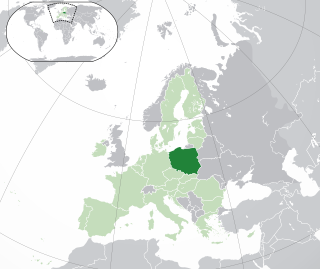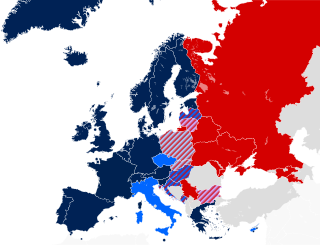
Princess Margaret, Countess of Snowdon was the younger daughter of King George VI and Queen Elizabeth The Queen Mother. She was the younger sister and only sibling of Queen Elizabeth II.
Same-sex marriage, also known as gay marriage, is the marriage of two people of the same legal sex. As of 2025, marriage between same-sex couples is legally performed and recognized in 37 countries, with a total population of 1.5 billion people. The most recent jurisdiction to legalize same-sex marriage is Liechtenstein. Thailand is set to begin performing same-sex marriages in January 2025.

In a culture where only monogamous relationships are legally recognized, bigamy is the act of entering into a marriage with one person while still legally married to another. A legal or de facto separation of the couple does not alter their marital status as married persons. In the case of a person in the process of divorcing their spouse, that person is taken to be legally married until such time as the divorce becomes final or absolute under the law of the relevant jurisdiction. Bigamy laws do not apply to couples in a de facto or cohabitation relationship, or that enter such relationships when one is legally married. If the prior marriage is for any reason void, the couple is not married, and hence each party is free to marry another without falling foul of the bigamy laws.
Same-sex marriage has been legal in the Netherlands since 1 April 2001. A bill for the legalisation of same-sex marriage was passed in the House of Representatives by 109 votes to 33 on 12 September 2000 and by the Senate by 49 votes to 26 on 19 December 2000. The law received royal assent by Queen Beatrix of the Netherlands on 21 December 2000 and took effect on 1 April 2001. The Netherlands was the first country in the world to legalize same-sex marriage. Polling suggests that a significant majority of Dutch people support the legal recognition of same-sex marriage.
Marriageable age, marriage age, or the age of marriage is the general age, a legal age or the minimum age marriage. Age and other prerequisites to marriage vary between jurisdictions, but in the vast majority of jurisdictions, the marriage age as a right is set at the age of majority. Nevertheless, most jurisdictions allow marriage at a younger age with parental or judicial approval, especially if the female is pregnant. Among most indigenous cultures, people marry at fifteen, the age of sexual maturity for both the male and the female. In industrialized cultures, the age of marriage is most commonly 18 years old, but there are variations, and the marriageable age should not be confused with the age of majority or the age of consent, though they may be the same.
Child marriage is a marriage or domestic partnership, formal or informal, usually between a child and an adult, but can also be between a child and another child.
Same-sex marriage is legal in all parts of the United Kingdom. As marriage is a devolved legislative matter, different parts of the United Kingdom legalised at different times; it has been recognised and performed in England and Wales since March 2014, in Scotland since December 2014, and in Northern Ireland since January 2020. Civil partnerships, which offer most, but not all, of the rights and benefits of marriage, have been recognised since 2005. The United Kingdom was the 27th country in the world and the sixteenth in Europe to allow same-sex couples to marry nationwide. Polling suggests that a majority of British people support the legal recognition of same-sex marriage.
Poland does not legally recognize same-sex marriages or civil unions. In 2012, the Supreme Court ruled that same-sex couples have limited legal rights with regard to the tenancy of a shared household. A few laws also guarantee certain limited rights to cohabiting couples, including same-sex couples. Same-sex spouses of European Union citizens also have access to residency rights under a June 2018 ruling from the European Court of Justice.
Same-sex marriage has been legal in Iceland since 27 June 2010. A bill providing for a gender-neutral marriage definition was passed by the Althing on 11 June 2010. No members of Parliament voted against the bill, and polling suggested that it was very popular among Icelanders. Iceland was the third Nordic country, after Norway and Sweden, the seventh in Europe, and the ninth in the world to legalize same-sex marriage.

Lesbian, gay, bisexual, transgender, and queer (LGBTQ) people in Poland face legal challenges not experienced by non-LGBTQ residents. According to ILGA-Europe's 2024 report, the status of LGBTQ rights in Poland is the worst among the European Union countries.

Anna Jagiellon was Queen of Poland and Grand Duchess of Lithuania from 1575 to 1587.

Evan Wolfson is an attorney and gay rights advocate. He is the founder of Freedom to Marry, a group favoring same-sex marriage in the United States, serving as president until its 2015 victory and subsequent wind-down. Wolfson authored the book Why Marriage Matters: America, Equality, and Gay People's Right to Marry, which Time Out New York magazine called, "Perhaps the most important gay-marriage primer ever written". He was listed as one of Time magazine's 100 most influential people in the world. In 2025, he was awarded the Presidential Citizens Medal, one of the highest civilian honors in the United States.
Same-sex marriage has been legal in Sweden since 1 May 2009 following the adoption of a gender-neutral marriage law by the Riksdag on 1 April 2009. Polling indicates that an overwhelming majority of Swedes support the legal recognition of same-sex marriage. Sweden was the second Scandinavian country, the fifth in Europe and the seventh in the world to open marriage to same-sex couples nationwide. Existing registered partnerships remain in force and can be converted to marriages if the partners so desire, either through a written application or through a formal ceremony. New registered partnerships are no longer able to be entered into and marriage is now the only legally recognized form of union for couples regardless of sex.

Public opinion of same-sex marriage in the United States has significantly changed since the 1990s, and a majority of Americans now favor same-sex marriage.

Lesbian, gay, bisexual, transgender, and queer (LGBTQ) rights are widely diverse in Europe per country. 22 of the 38 countries that have legalised same-sex marriage worldwide are situated in Europe. A further 11 European countries have legalised civil unions or other forms of recognition for same-sex couples.
Same-sex marriage has been legal in Norway since 1 January 2009 when a gender-neutral marriage law came into force after being passed by the Storting in June 2008. Norway was the first Scandinavian country, the fourth in Europe, and the sixth in the world to legalize same-sex marriage, after the Netherlands, Belgium, Spain, Canada and South Africa. Polling suggests that a majority of Norwegians support the legal recognition of same-sex marriage, and in 2024 Norway was named the best marriage destination for same-sex couples by a British wedding planning website.
Same-sex marriage has been legal in Spain since July 3, 2005. In 2004, the nation's newly elected government, led by Prime Minister José Luis Rodríguez Zapatero of the Socialist Workers' Party, began a campaign to legalize same-sex marriage, including the right of adoption by same-sex couples. After much debate, a law permitting same-sex marriage was passed by the Cortes Generales by a vote of 187–147 on June 30, 2005, and published on July 2. The law took effect the next day, making Spain the third country in the world to allow same-sex couples to marry on a national level, after the Netherlands and Belgium, and 17 days ahead of the right being extended across all of Canada.
India does not recognise same-sex marriage, civil unions or other forms of partnerships, but provides some limited legal recognition to cohabiting same-sex couples in the form of live-in relationships. Several same-sex couples have married in traditional Hindu ceremonies since the late 1980s; however, these marriages are not registered with the state and couples do not enjoy all the same rights and benefits as married opposite-sex couples. The Supreme Court of India in August 2022 provided social security rights to those in same-sex live-in relationships while also recognising same-sex couples as being part of a "family unit".

In the United States, the minimum age at which a person can marry, with or without parental consent or other authorization, is set by each state and territory, either by statute or where the common law applies. The general marriage age is 18 years of age in all states except Nebraska, where the general marriage age is 19, and Mississippi, where the general marriage age is 21. The general marriage age is commonly the age of majority, though in Alabama the general marriage age is 18 while the age of majority is 19.

In the United States, a child marriage is a marriage in which at least one party is under 18 years of age—or the age of majority. The U.S. is the only UN member state that has not yet ratified the Convention on the Rights of the Child. Its Committee on the Rights of the Child "reaffirms that the minimum age limit should be 18 years for marriage."








